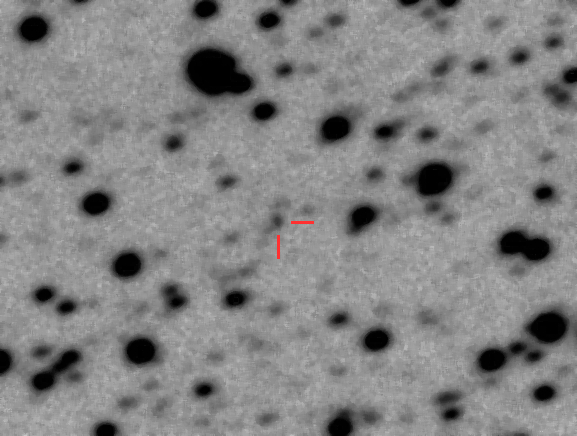
Pasiphae has a diameter of around 58km and is probably a captured asteroid because it is in a highly eccentric retrograde orbit. Pasiphae was magnitude 17.2 at the time of observation. The thirty 1-minute subs were stacked on the predicted movement of the satellite, which is why it appears circular and the background stars are slightly trailed.
The sky conditions were not very good when this image was taken. Saharan dust in the atmosphere was illuminated by an almost full moon and turbulent winds pouring down off the Cumbre Vieja to the east produced very bad seeing of around 6 to 8 arcseconds. The resulting poor contrast and bloated star images are readily visible, especially if the image is compared to that of Lysithea (a notedly fainter satellite) taken the following night when conditions had improved. The image is displayed negated (i.e. black stars on a light background) to help make the satellite more visible.
| Date and times of observation | 2020-08-05 00:50 UT |
| Telescope | 0.4m f/6.5 Dilworth-Relay |
| Camera | Starlight Xpress Trius-PRO SX814 CCD |
| Filter | None |
| Exposure | 30×60s stacked on the mean motion of the satellite |
| Centre of image | RA 19h18m13.3s Dec -22°28'28" |
| Image dimensions | 5.9 arcmin × 3.8 arcmin |